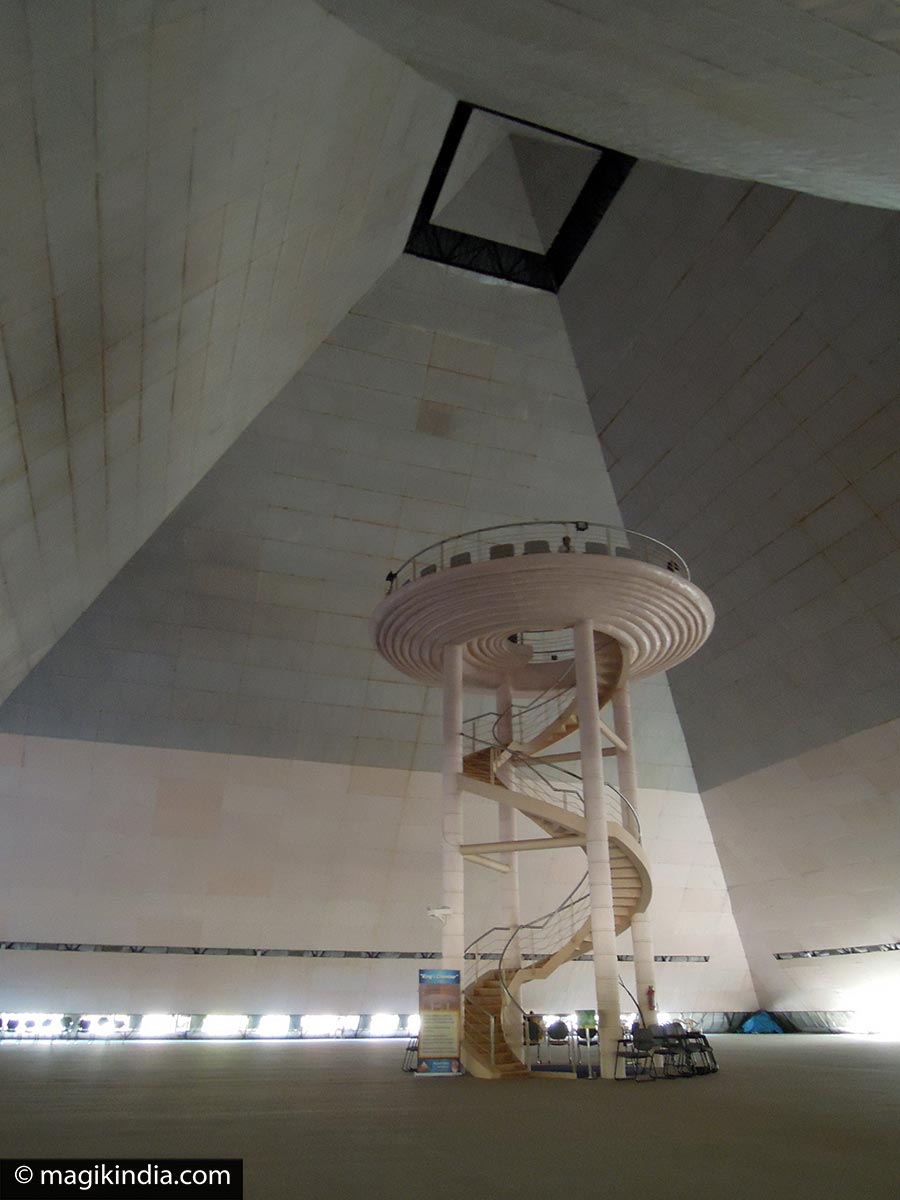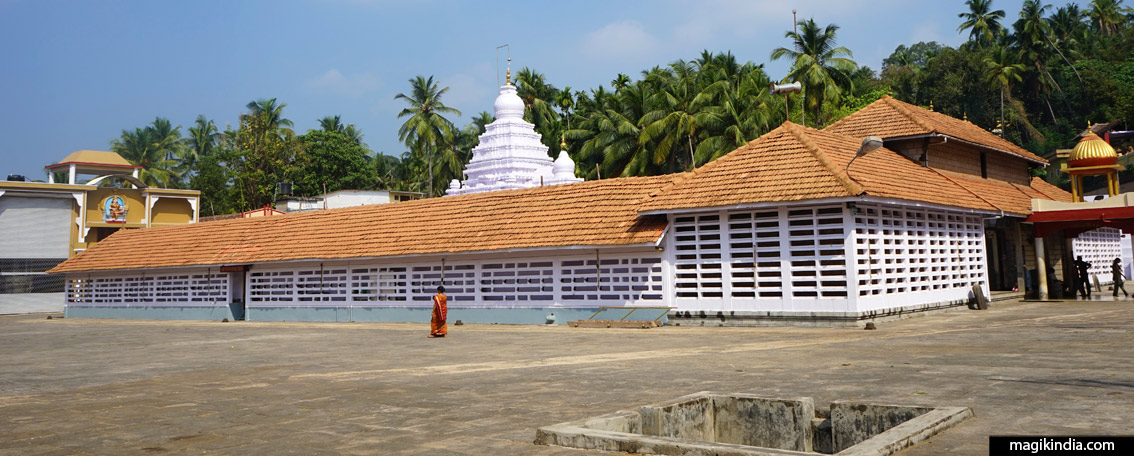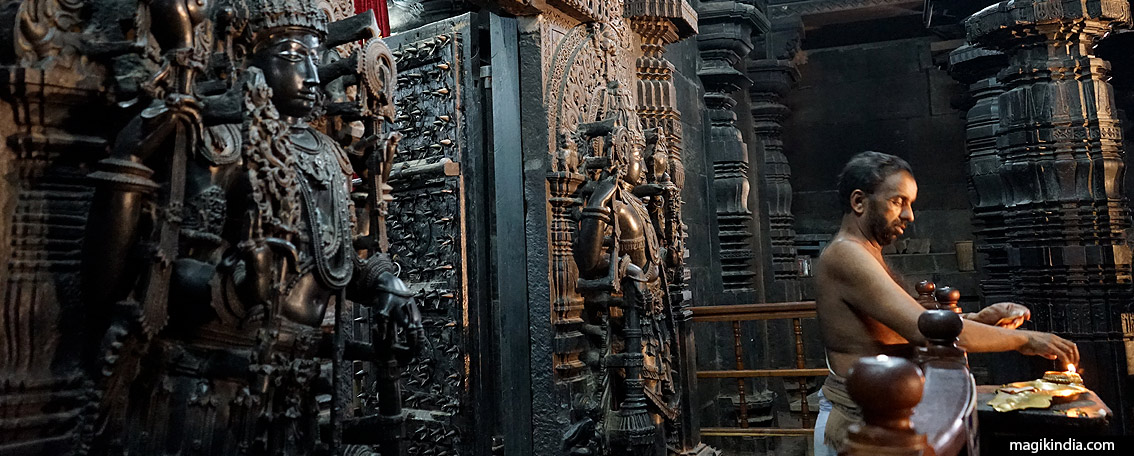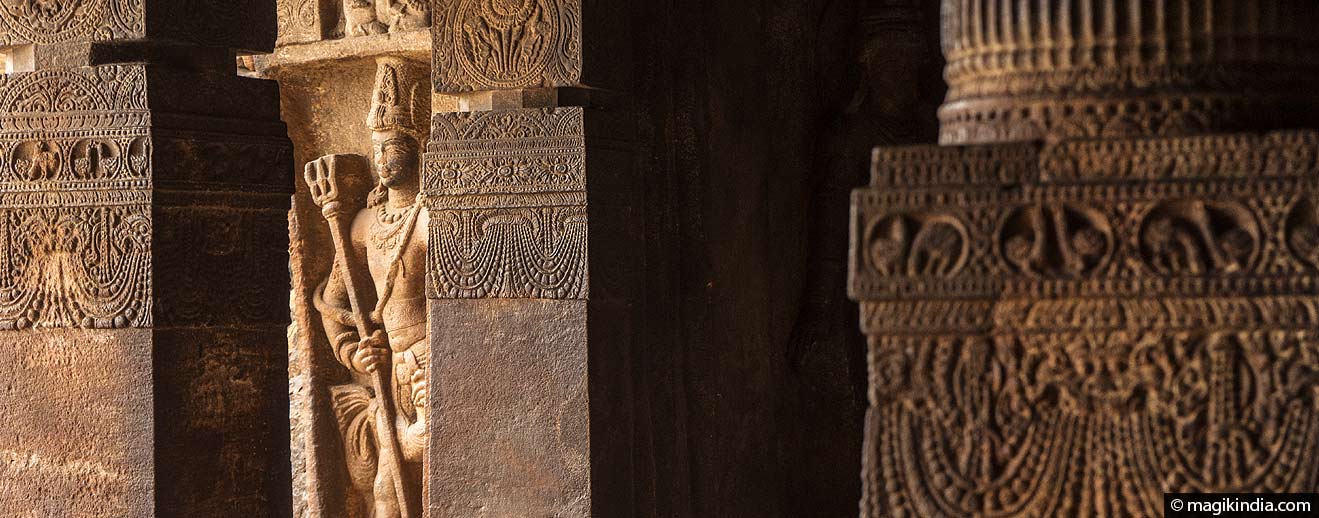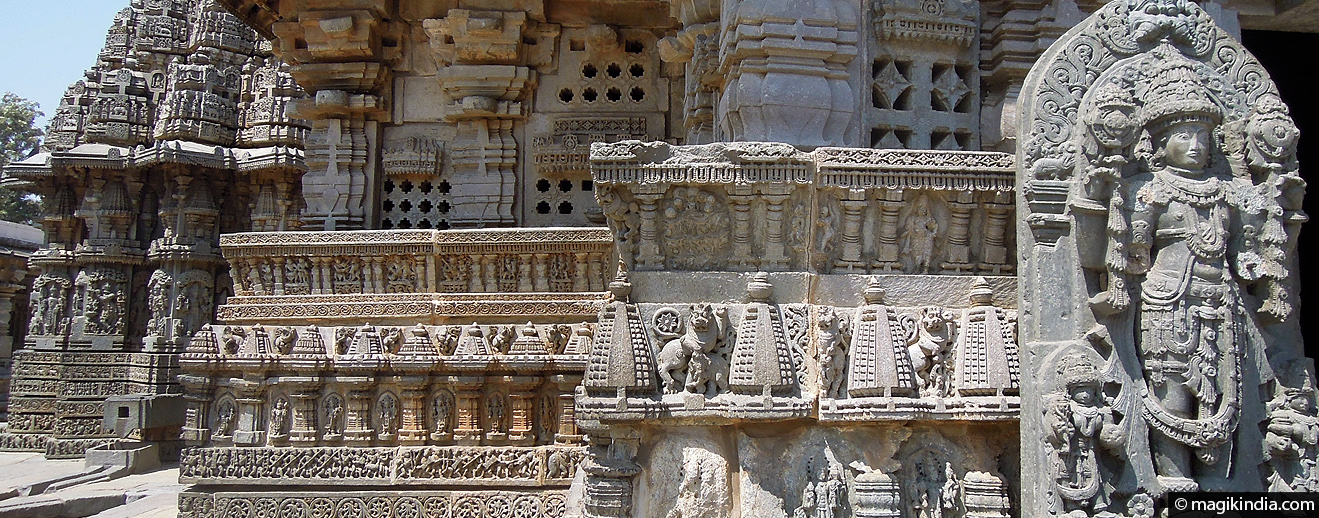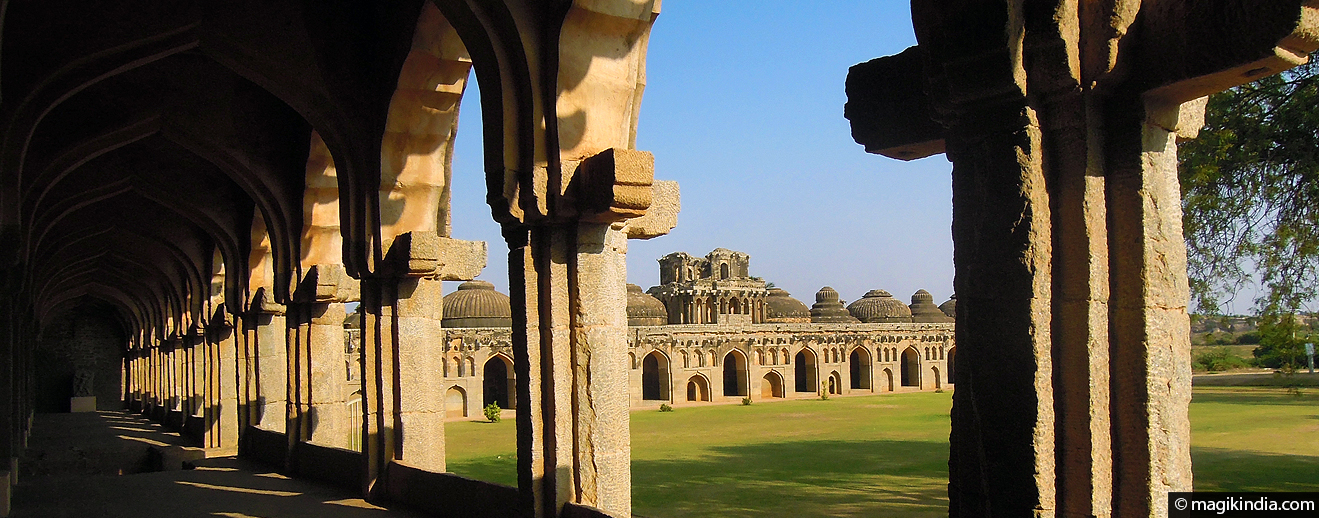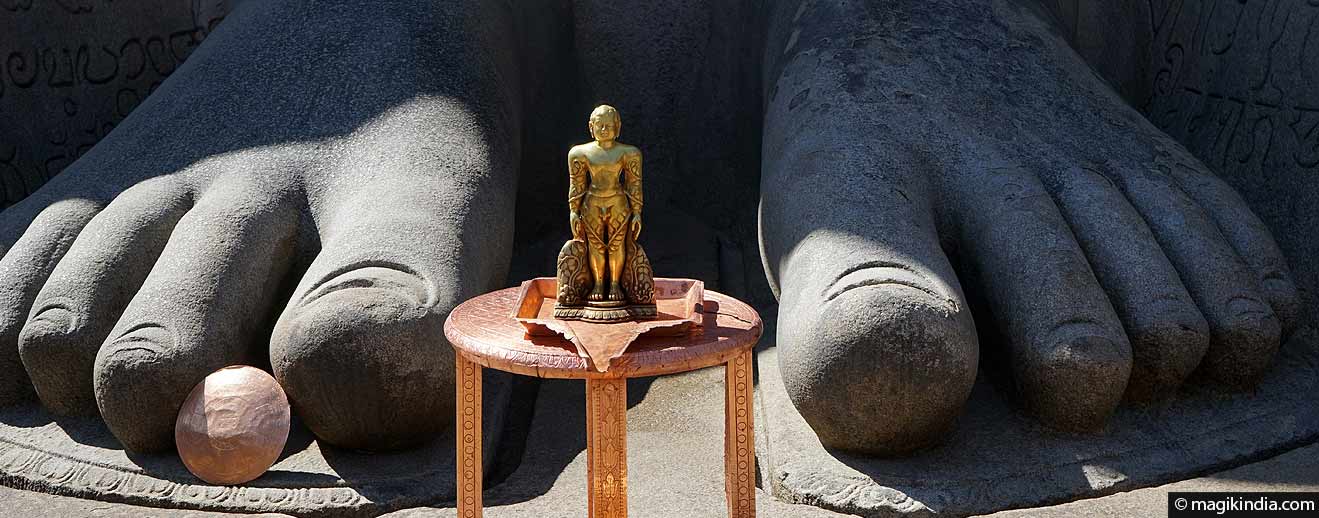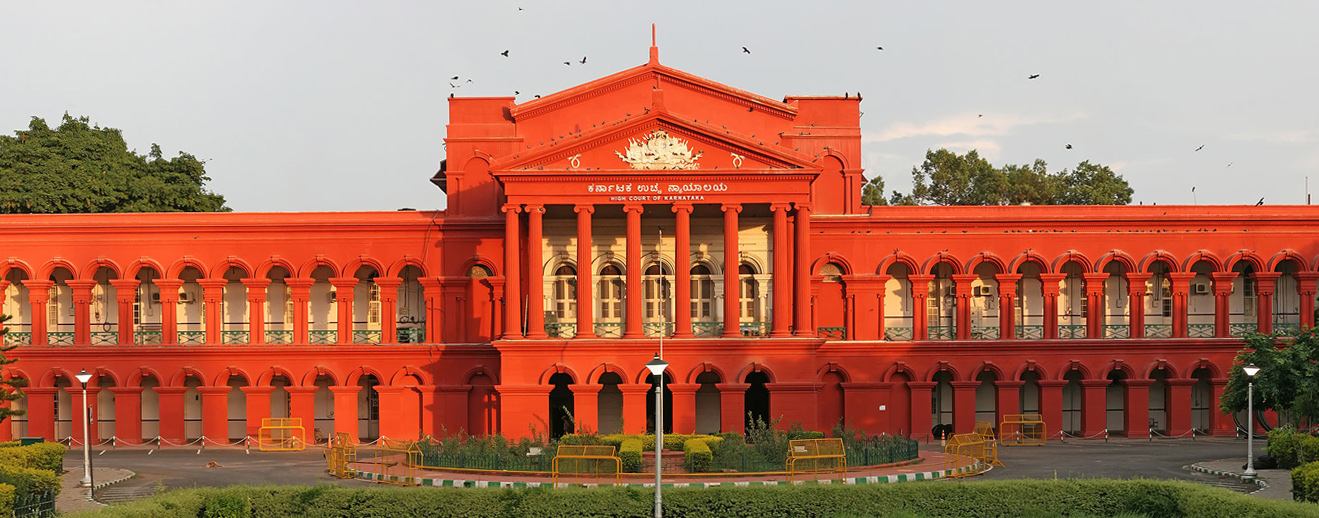
Bengaluru (Bangalore), capital of Karnataka
Having earned a sound reputation in the aerospace and data processing industries, Bengaluru (formerly Bangalore), capital of Karnataka, is known as India’s Silicon Valley. This resolutely modern city enjoys a temperate climate and its many parks have earned it fame as the Garden City of India.
There is a folk legend to explain the origin of Bengaluru’s name. It is said that Veera Ballala II, an 11th-century Hoysala king, got lost in the forest when out hunting. As he wandered, hungry, through the forest he met an old woman who served him some boiled beans. To thank her, the king called the place benda-kaal-uru: “town of the boiled beans”. Over time, this changed to Bengaluru
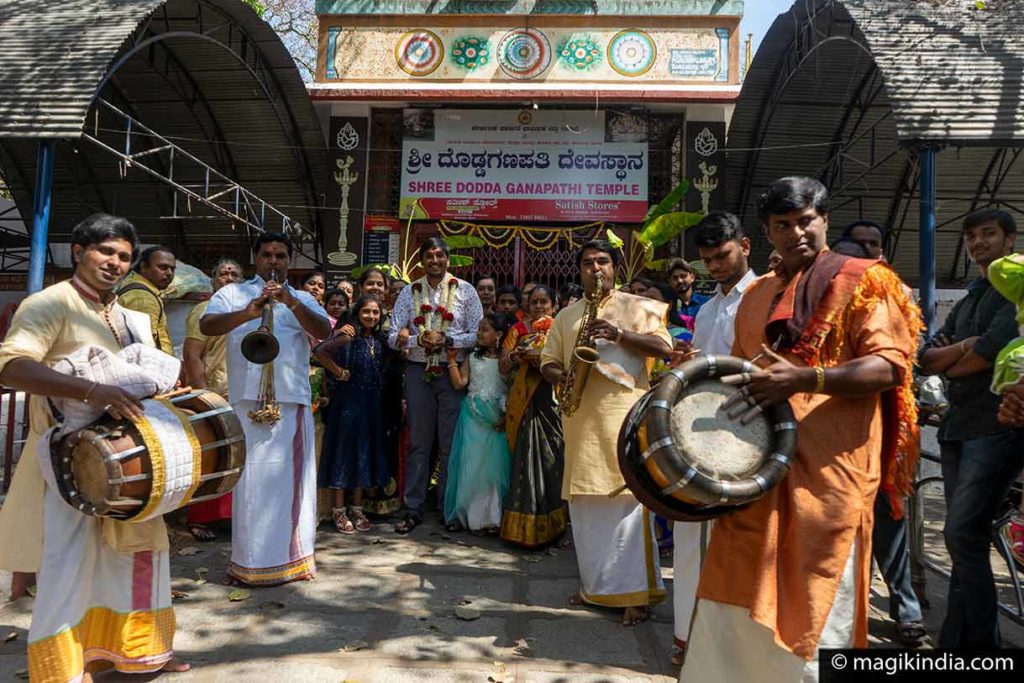
As a rule, visitors stop in Bangalore for its Western flavour. The business centre, with its shops, restaurants and hip bars would please any homesick Westerner.
Although the town does have some interesting vestiges of the past, Karnataka’s most fascinating places are elsewhere, in Hampi, Beluru, Halebidu, Somnathpur and the princely city of Mysuru (Mysore), for example.
Festivals not to miss
Kadalekaye Parishe (Peanut Festival)
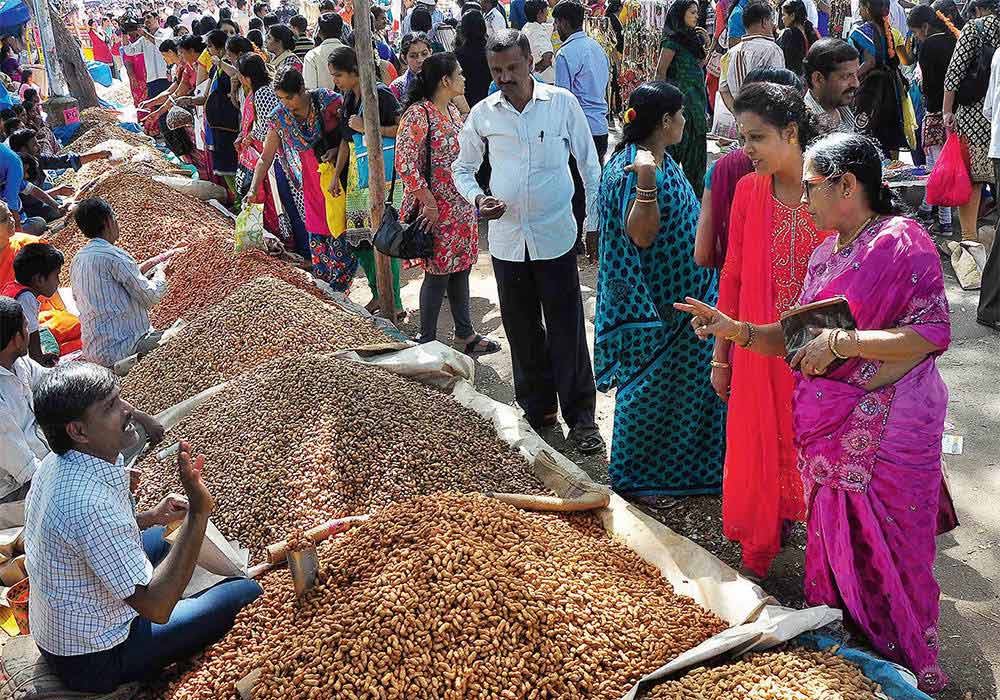
Kadalekaye Parishe, also known as Peanut festival, falls in the month of November. It is held in order to celebrate the first groundnut crop of the year. As a part of the celebrations, the farmers of the city visit the Bull temple to seek blessings of God.
Karaga Festival
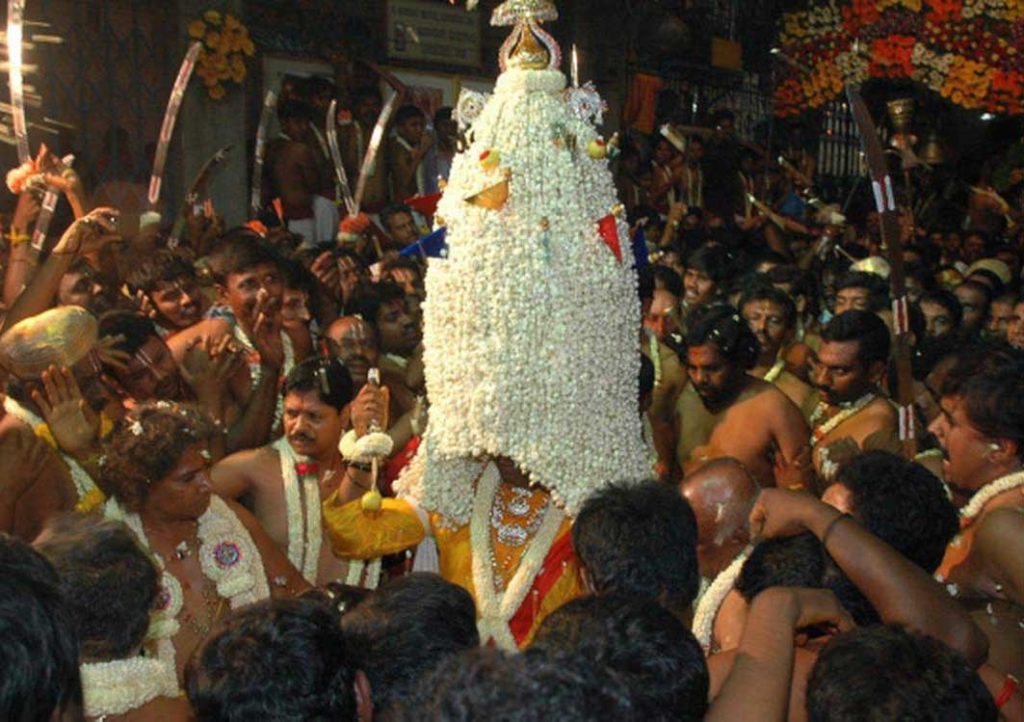
The Karaga festival is celebrated throughout Karnataka, but with small variations in rituals and traditions. The Karaga is an earthen pot that supports a floral pyramid and a small figure of the goddess with a small silver umbrella on top of that. The Karaga is carried on their head without touching it.
And now, let’s visit Bangalore!
Bull Temple
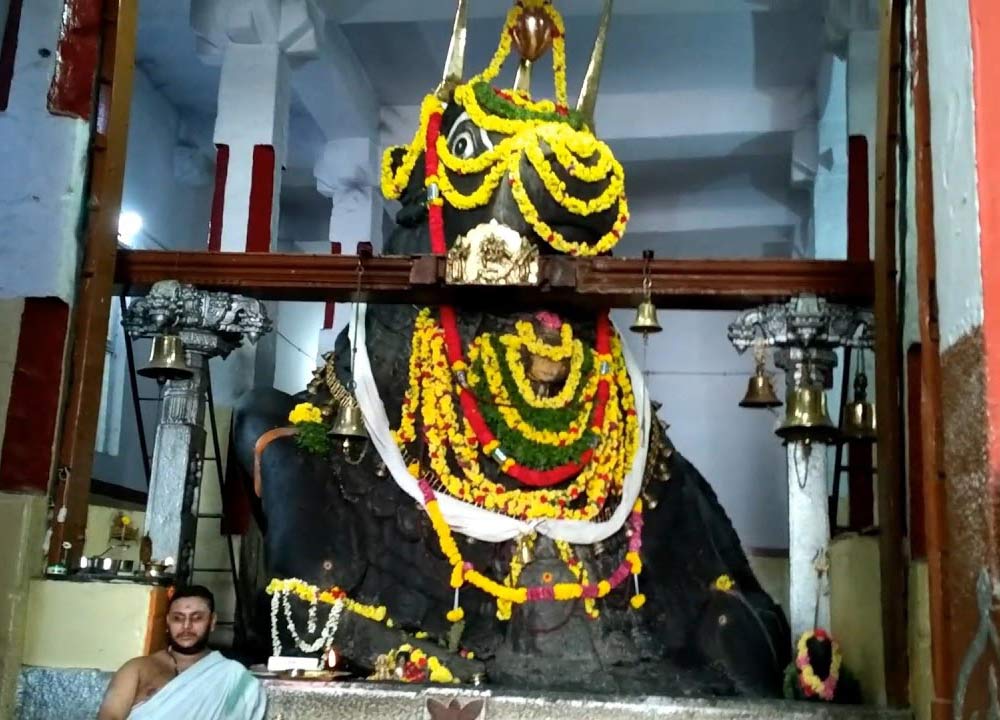
The Basavanagudi Nandi Temple, one of Bengalore’s oldest temples, houses a huge stone statue of the bull Nandi, the Hindu god Shiva’s mount.
At 5m high and 6m wide it is one of the largest Nandis in India. Tradition has it that a small iron plate must be kept on the bull’s head to keep him from growing even bigger.
According to folk legend, the statue was built to calm a bull that was destroying the groundnut crops. In November or December a groundnut fair (Kadalekai Parishe) is held around the temple in memory of the legend.
Dodda Ganapathi Temple

Next door to the Bull Temple is one with an imposing statue of the elephant-headed god Ganesha.
This temple was built by Kempegowda I, founder of Bangalore. One day Kempegowda was out walking and saw a rock that looked to him like Lord Ganesha. He told his sculptors to carve it into a holy statue of the god. Crowds of faithful come to see the Satya Ganapathi statue, almost 6m high and 5m wide and adorned with astonishing decorations.
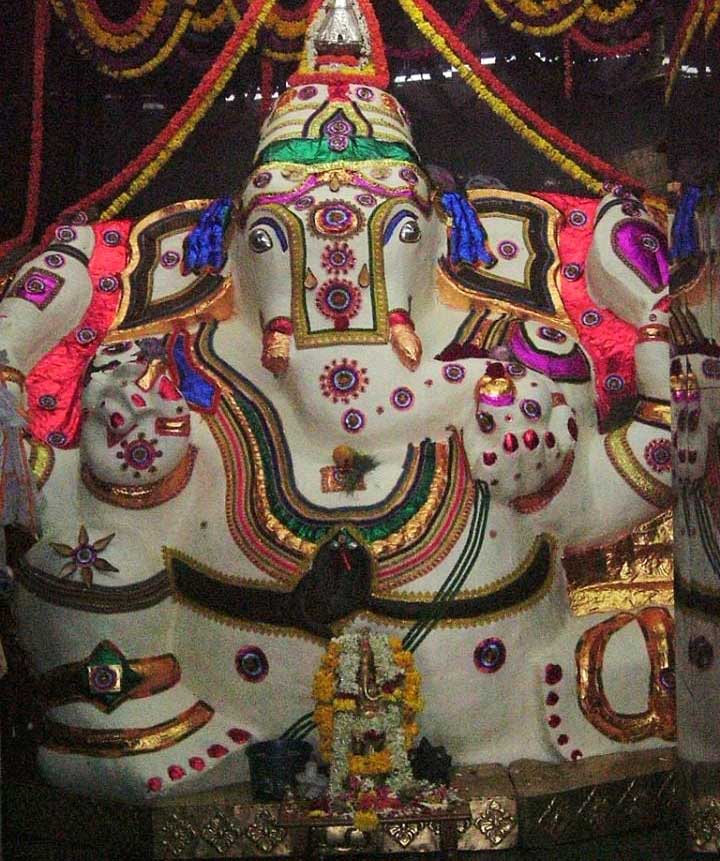
Palace de Bangalore
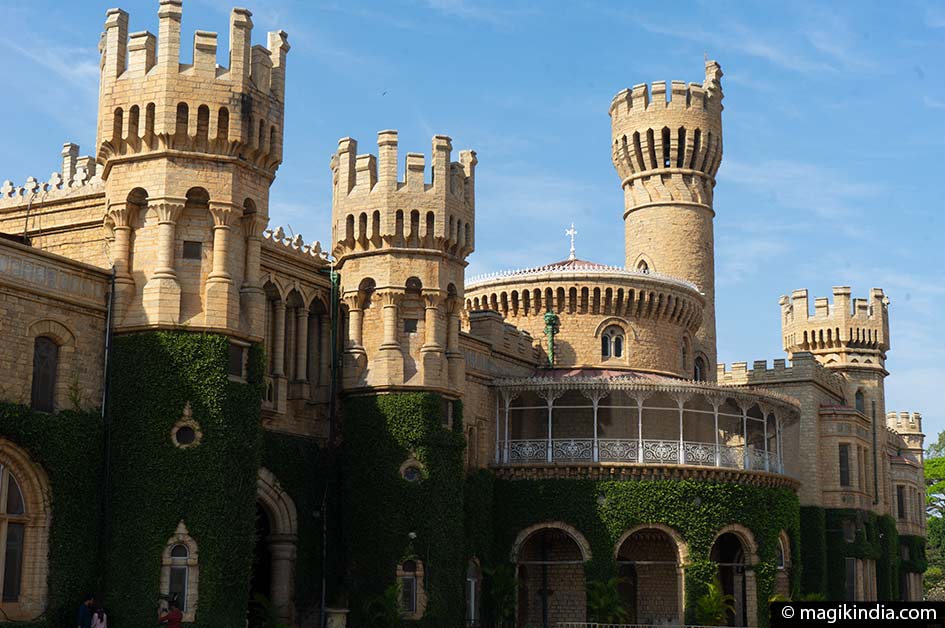
Bangalore Palace, inspired by England’s medieval Tudor architecture, was started in 1862.
In 1884 it was bought by Chamarajendra Wadiyar X, Maharaja of Mysuru. It is still the private residence of the Wadiyars, Karnataka’s royal family.
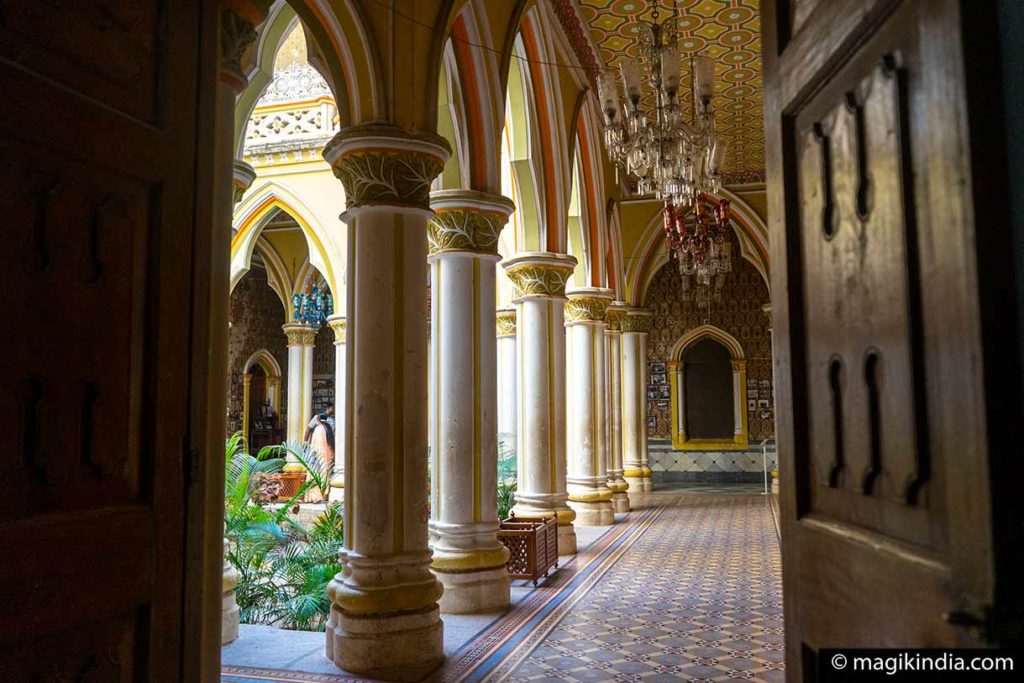
The inside is richly decorated and the gardens around the palace are used for public events, including concerts with international musicians.
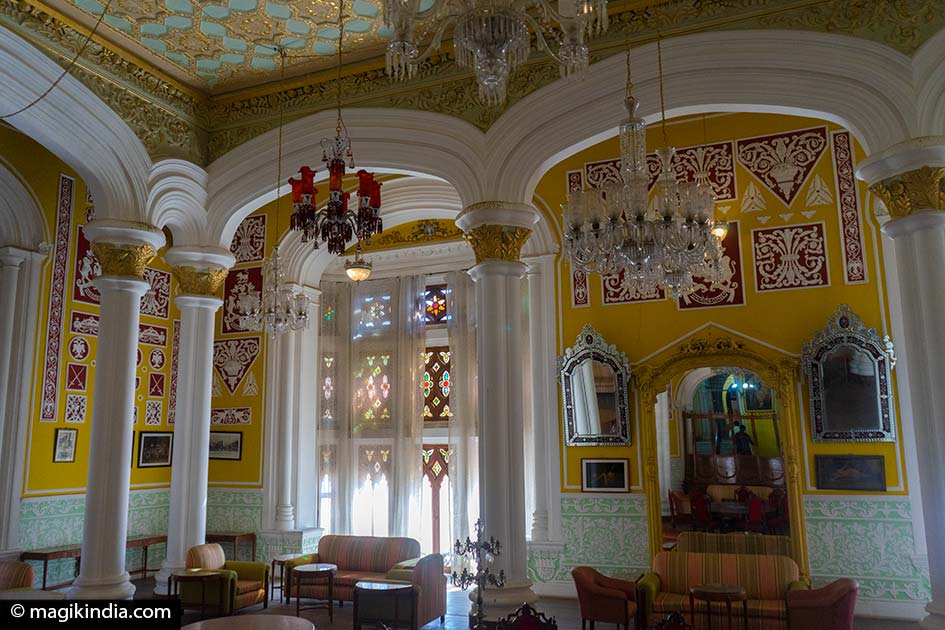
Tipu Sultan’s Palace
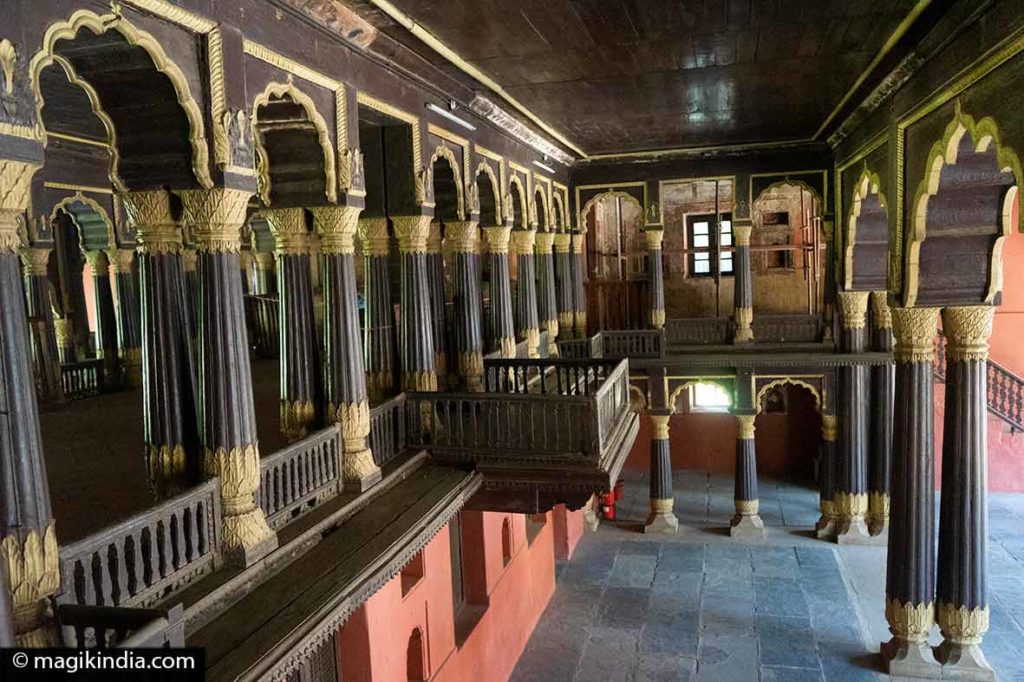
The red ans black palace of Tipu Sultan, near the city market, is a good example of Indo-Islamic architecture, although it could be maintained better. Completed in 1791, it was the summer residence of the ruler of Mysore, Sultan Tipu. The structure is made entirely of teak wood and decorated with beautiful floral patterns.
Vidhana Soudha
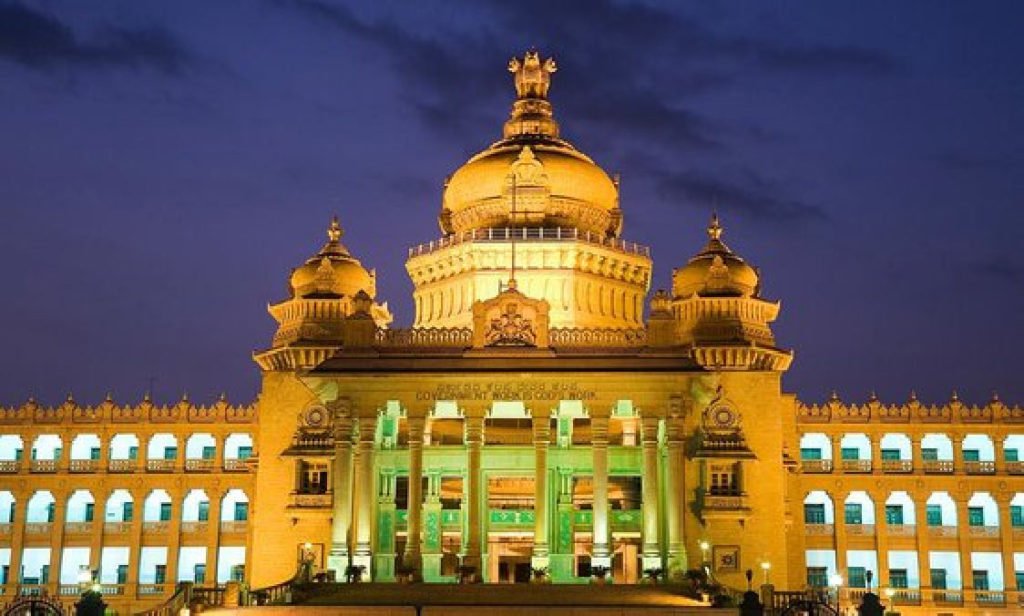
The Vidhana Soudha is an imposing building in what is called the Indo-Saracenic style, incorporating elements of Rajasthani, Dravidian and European architecture. Hanumanthaiah Kengal, Prime Minister of Mysore from 1951 to 1956, is credited with its design. It houses the legislature of Karnataka State and some government departments.
Attara Kacheri
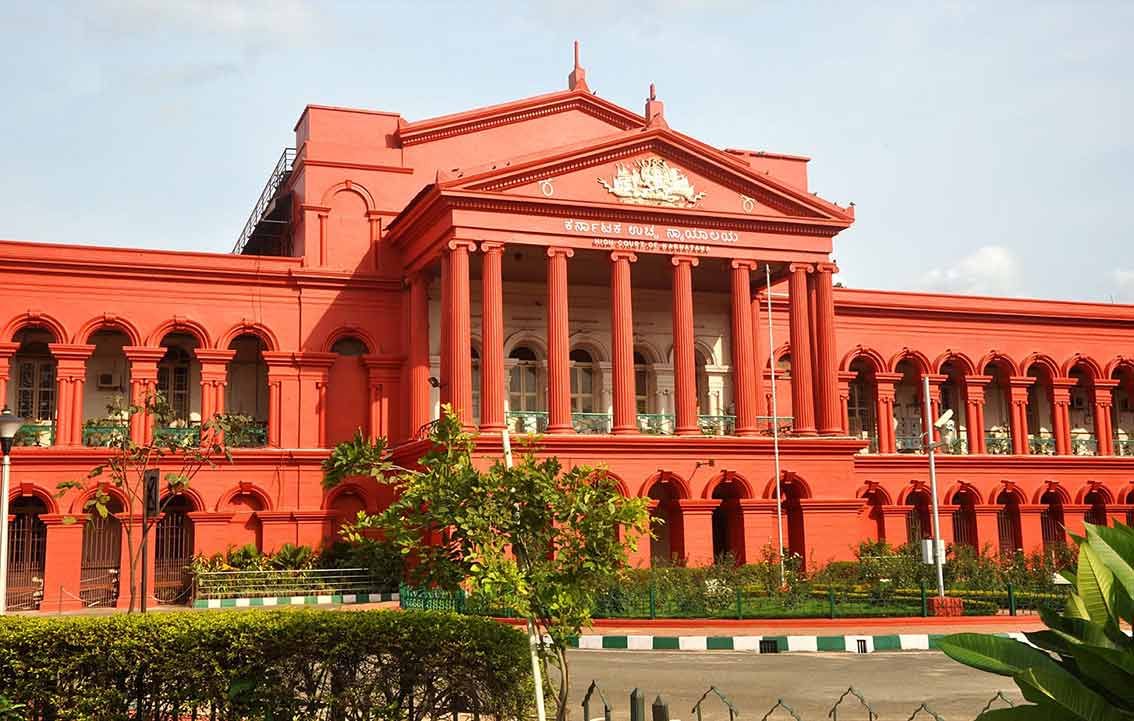
Opposite the Vidhana Soudha stands the Attara Kacheri (“18 departments”), housing the High Court. Its construction was completed in 1868, during the reign of Tipu Sultan, ruler of Mysuru. Its originality lies in its combination of purely European Neoclassical architectural style with a bright red colour.
Cubbon park
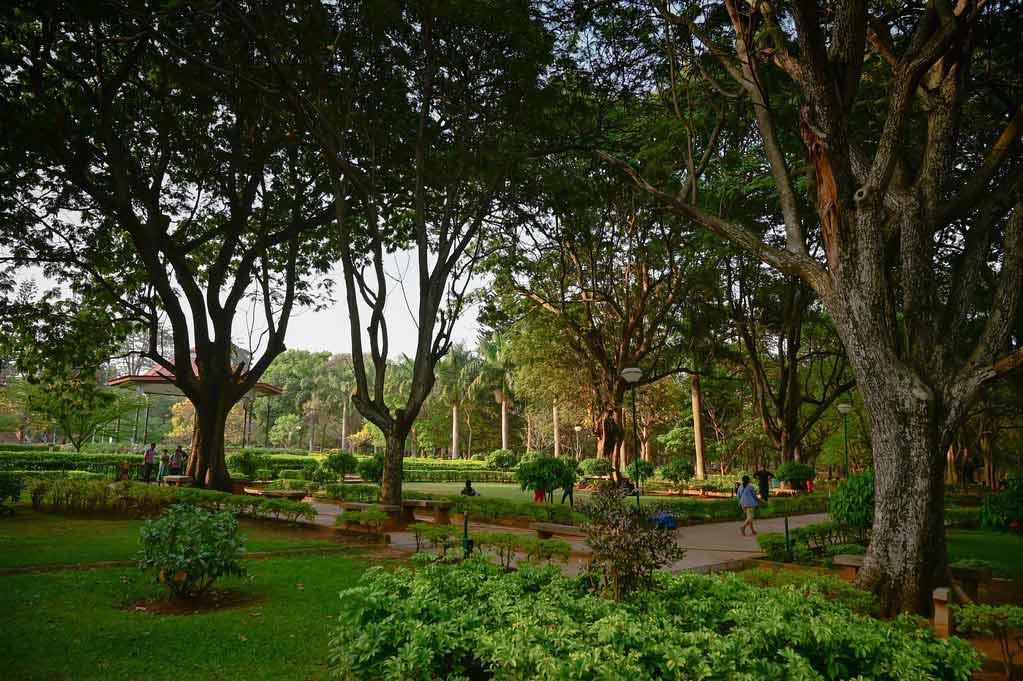
Cubbon Park, officially called Sri Chamarajendra Park, is in Bangalore’s administrative district in the centre of town, around the Attara Kacheri and across from the Vidhana Soudha. The park has thousands of different plant species and offers a welcome green refuge from the bustle of the business district.
Lalbagh Botanical gardens
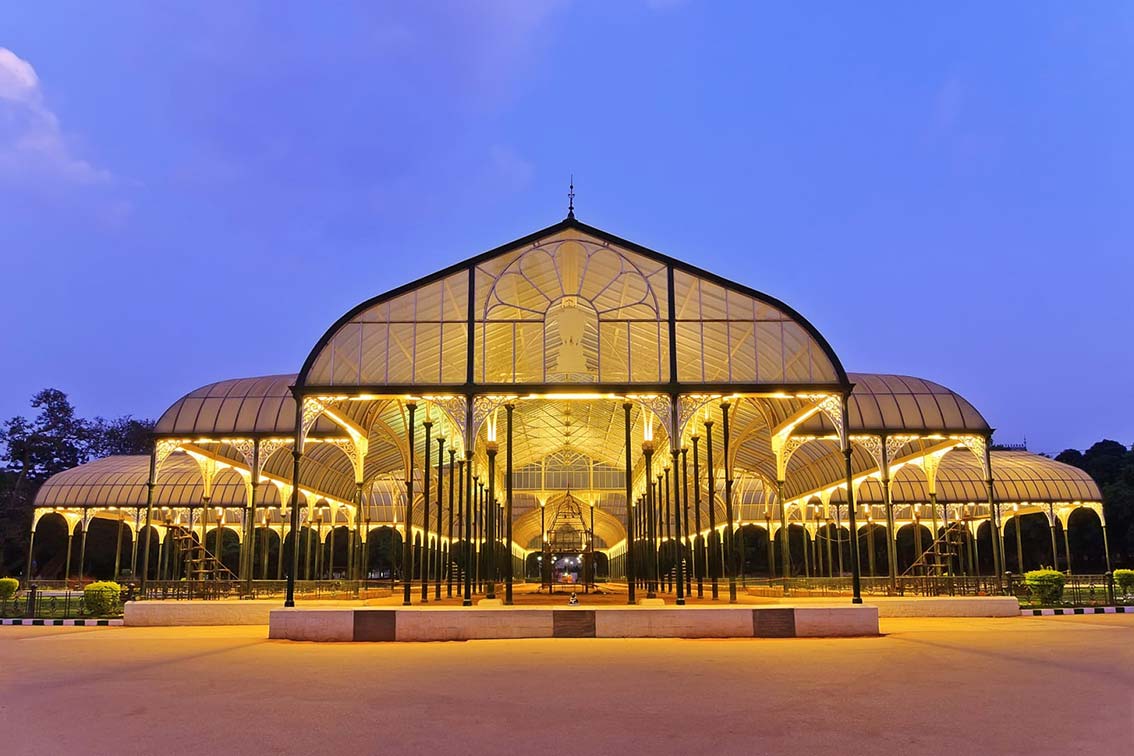
The Lalbagh (or Lal Bagh) botanical garden (the “red garden”) is one of Bangalore’s best-known gardens. Originally commissioned by Hyder Ali, ruler of Mysore in the 18th century, it was completed by his son Tipu Sultan.
It is famous for the amazing glasshouse where an annual flower show is held. Lalbagh also boasts India’s largest collection of tropical plants, a lake and an aquarium.
Temple ISKCON
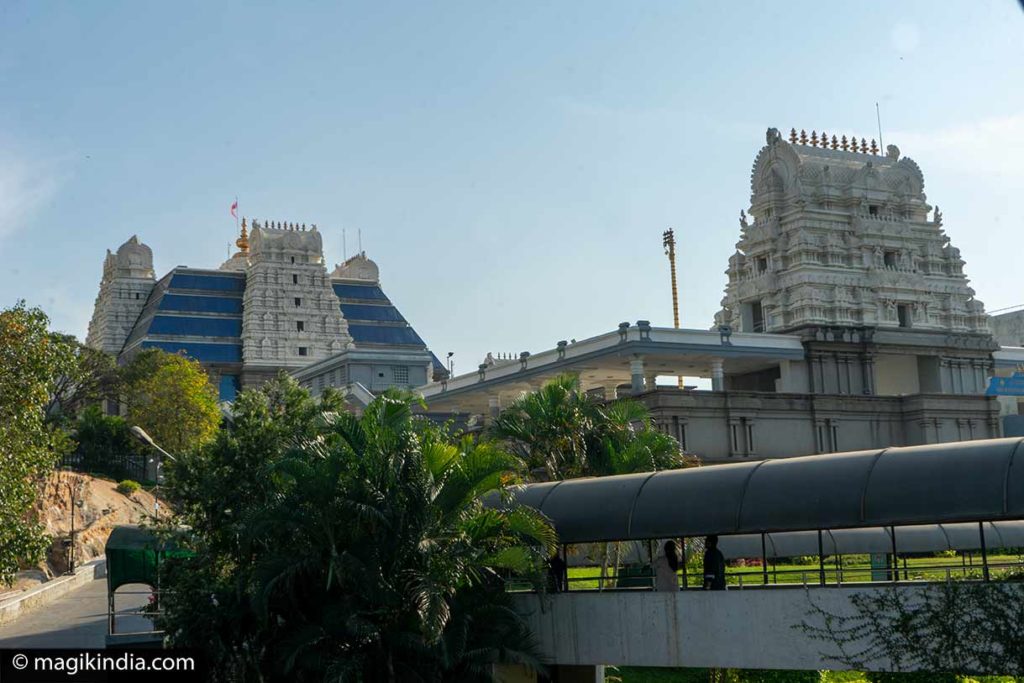
The ISKCON temple complex, built in 1997 by the mission of the same name, has now become one of the most visited places in Bangalore, due to its original architecture blending traditional South Indian style with modern elements.
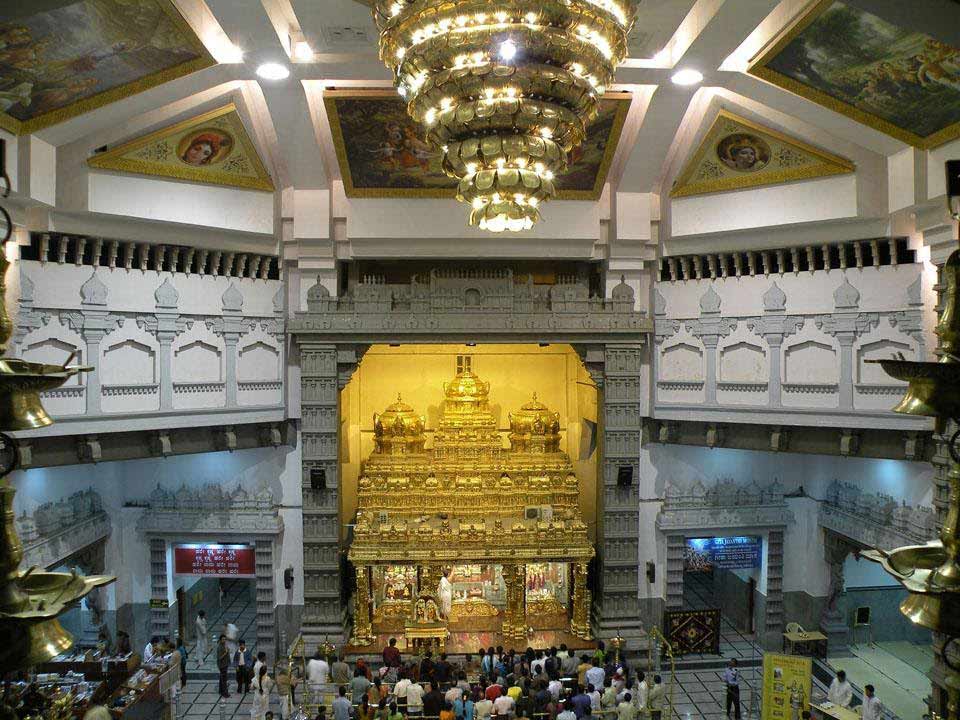
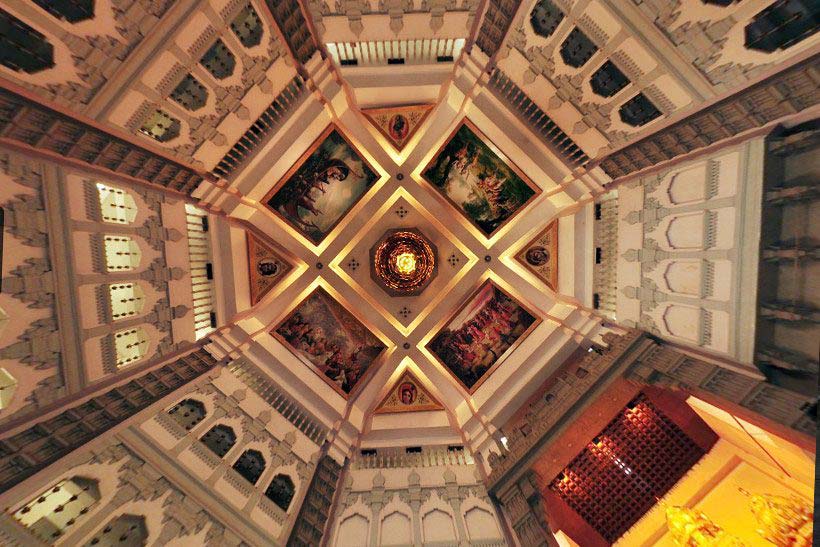
The presiding deities of the temple are Sri Radha Krishnachandra, Sri Krishna Balarama and Sri Nitai Gauranga located in the main temple and overlooked by a ceiling richly decorated with panels on the life of Lord Krishna.
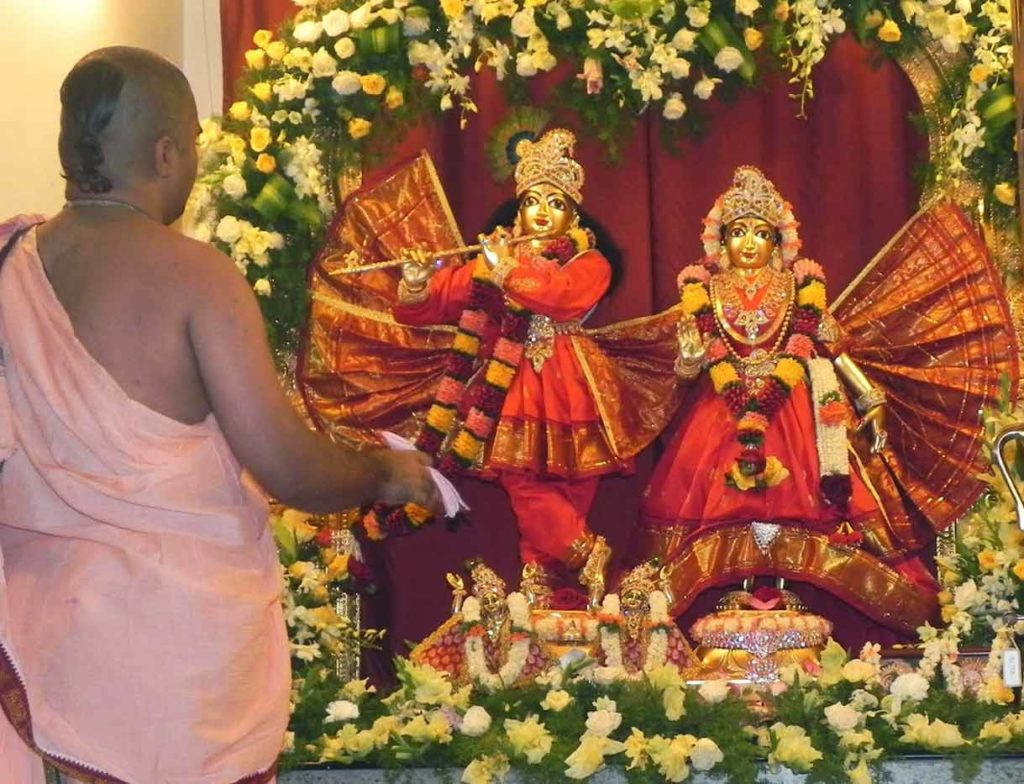
Malleswaram
As and when I visit Bangalore, I discover new areas of interest; Malleshwaram is one of these. Located northwest of Bangalore City, this suburb, named after Kadu Malleshwaram Temple (see below), is known for its bustling streets and ancient temples.
Temple Kadu Mallikarjuna Malleshwaram

It is said that the temple of Kadu was once built in the middle of a thick forest, hence its name “kadu”, which means forest; he now nestles in the middle of a well-kept garden.
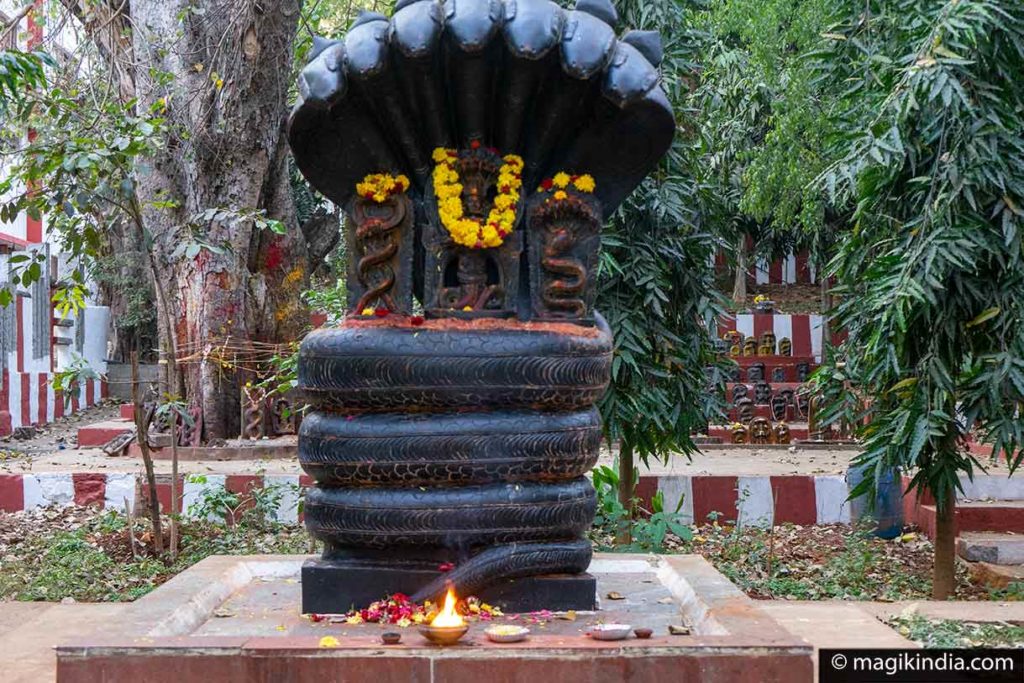
The main shrine, in Dravidian style, was built in the 17th century CE by Venkoji, the brother of Shivaji, the great king Marathi. It houses a lingam representing Shiva in the form of Mallikarjuna.
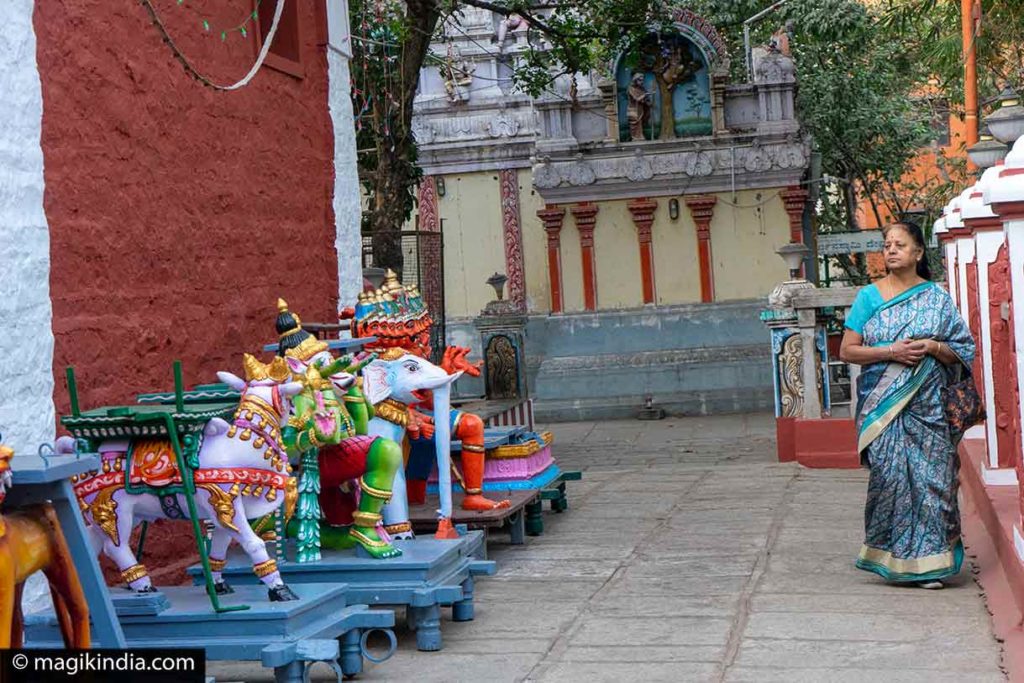
Dakshinamukha Nandi Tirtha Kalyani Kshetra
However, the place that attracts the most attention in this set of temples is the Nandishwara pond (Basava Theertha or Sri Dakshinamukha Nandi Tirtha Kalyani Kshetra) located below the Kadu temple. He would be over 400 years old.
There, a source of water coming out of the mouth of the stone statue of Nandi (the divine mount of Lord Shiva), falls on a Shivalingam and then flows into a tank located in the center of the temple.
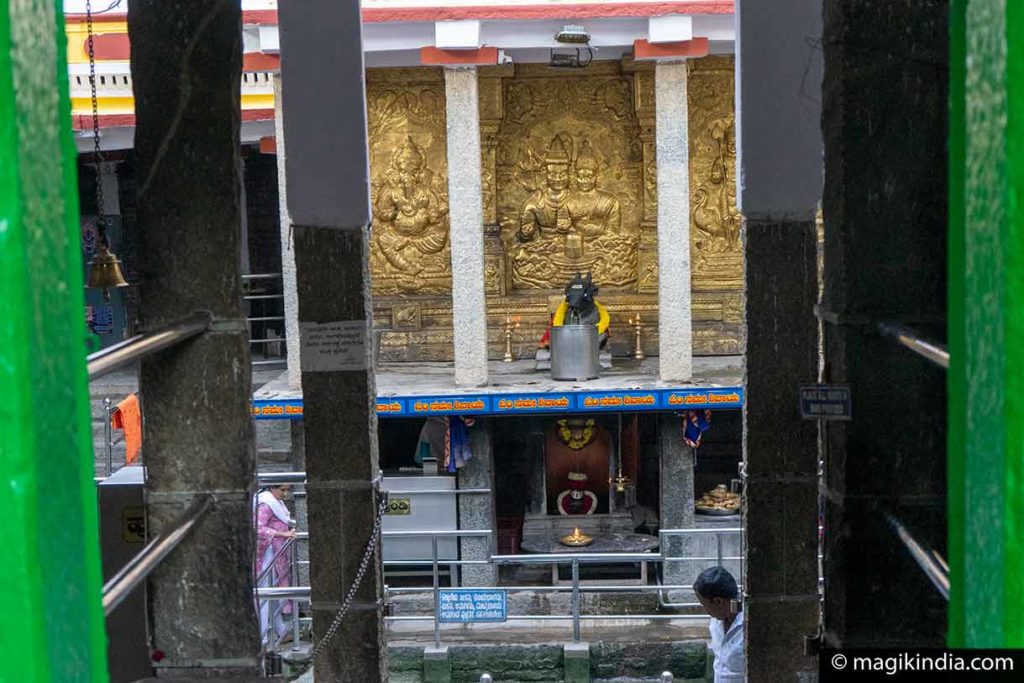
In front of Nandishwara, there are two other temples, one dedicated to Gangamma or the goddess Ganga, local deity of Bangalore, and another to Vishnu. They are both worth a look.
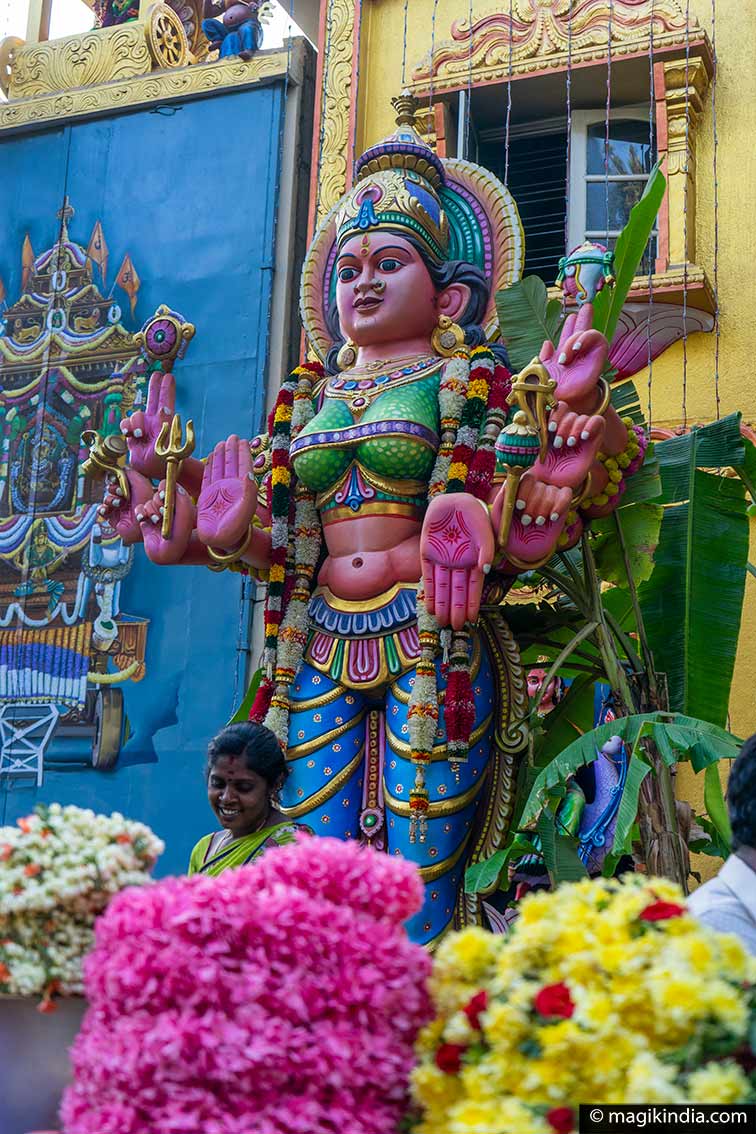
Pyramid Valley (40 km)
We end this page on Bengaluru with a little curiosity: the mystical “valley of the pyramid”.
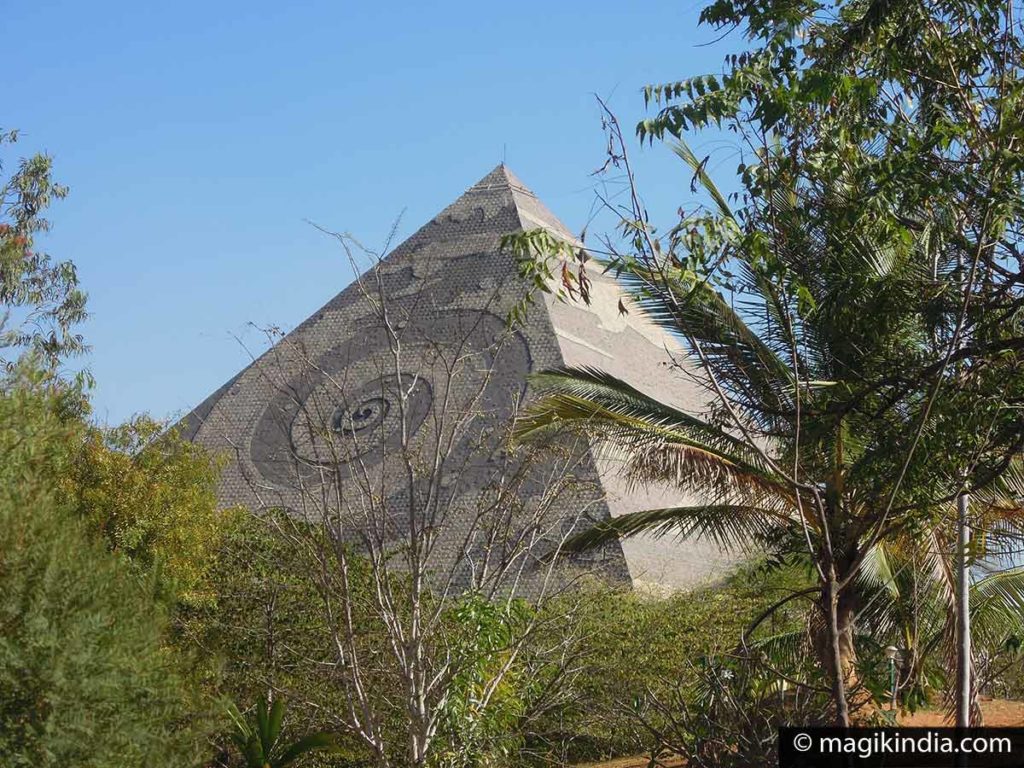
Located about forty kilometers from Bangalore and nestled in lush greenery, the “pyramid valley” or Maitreya-Buddha Vishwalayam contains a pyramid, which claims to be the largest in the world, it can accommodate around 5,000 people at a time.
This impressive edifice, built on the principles of the pyramid of Giza in Egypt, is part of an international meditation center dedicated to universal spiritual wisdom.
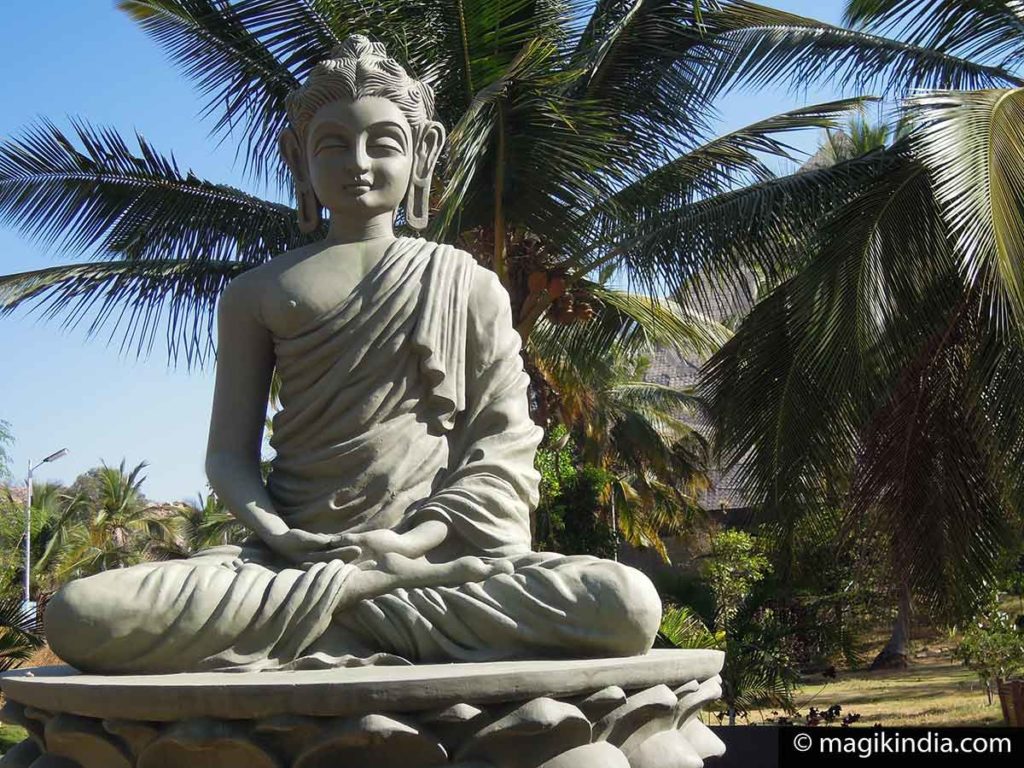
Its founder, Brahmarshi Patriji wanted to provide a common platform for all the spiritual masters of the world, to collaborate for a peaceful and benevolent planet earth.
